Austin & Longbridge Railways
One of the reasons Herbert Austin located his company at Longbridge was because it was already served by two railway companies. The Halesowen to Northfield railway (GWR) was opened on the 10th September 1883 with a third class ticket costing just 1d per mile. The other railway company was the Midland Railway (MR), the two railway tracks meeting at a point which they called Halesowen Junction.
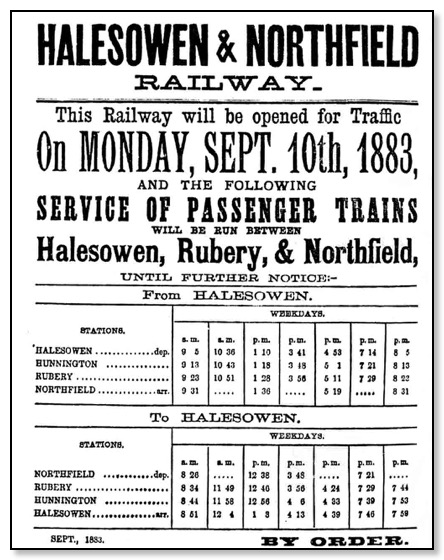
The MR main line which had twin tracks went from Birmingham (New Street) to Gloucester, and after leaving the junction went into a tunnel called Cofton Tunnel. The GWR line, single track went via Rubery etc to Halesown and then onto Old Hill in the heart of the Black Country. It was called the Black Country as this was where mining, iron works and various heavy industries were situated, pouring out clouds of black smoke that hung over the area, if the weather conditions were right the area would be covered in SMOG.
There had been a station at Longbridge on the main line (where the current Station is today), but this was closed in 1849, long before Herbert Austin had arrived, the nearest one still open was Northfield a few miles away.
Around this time Long-Bridge was two words, a small river called the Rea used to flood, so a long wooden bridge was constructed so that the stagecoaches of the day were not impaired, as this was the main road between Birmingham and Bristol (Bristol Road) hence the name Long Bridge.
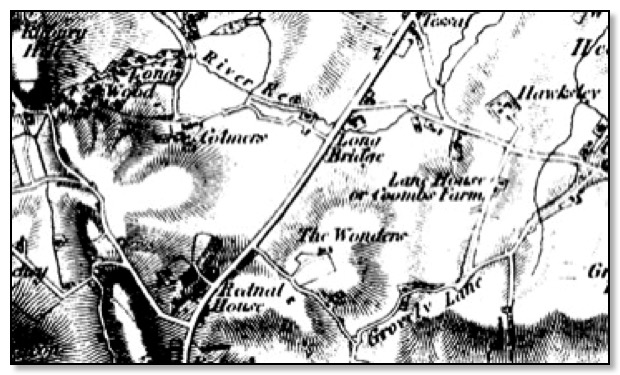
Long-Bridge 1832
____________
Great Western Railways (GWR)
It was in 1878 that work on the construction of the Halesowen to Northfield line began. But from the outset the weather was against them, and a few hundred yards from Frankley Hill where a small river, called the Rea ran through a wooded valley called Dowery Dingle. It was decided that the best way to traverse this valley was to build a viaduct which would be 660ft in length supported on two stone abutments and eight cast-iron piers, and rose 100ft above the river, as you can see from the picture it was an imposing structure.
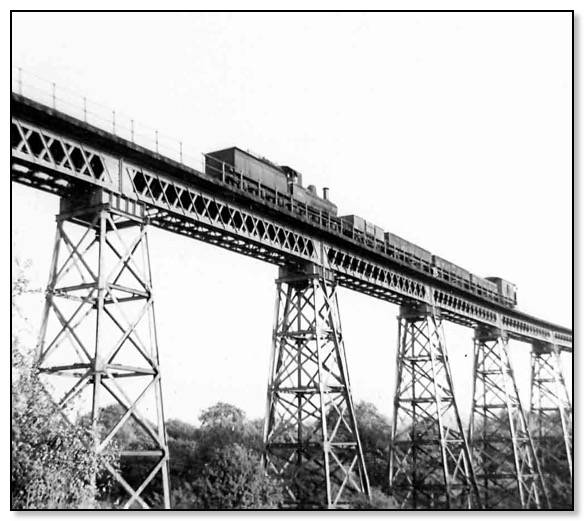
Dowery Dingle Viaduct
Work on the Dowery Dingle Viaduct started in 1878 and had a span of 660ft at a height of 100ft. The line had a gentle curve at the southern end, while the outer rail was slightly elevated, this made the carriages tilt slightly, which tended to make lady passengers very nervous, so a speed limit of 10mph was imposed.
After nearly five years construction, on the 10th September 1883 the line was officially opened. A public luncheon was held at the Shenstone Hotel, on the 5th October 1883. The main speaker was Lord Lyttleton who owned Hagley Hal1 and spoke how the opening of the new railway would, he trusted, be the means of opening up hundreds of acres of coal and thus providing work for people.
With the construction of the Black Country rail link by the GWR, it was necessary to build a road bridge over the new railway track. The opportunity was taken at the same time to construct a culvert to take the River Rea under the bridge and parallel with the railway line. A map of 1912 shows it now spelt as one word Longbridge.
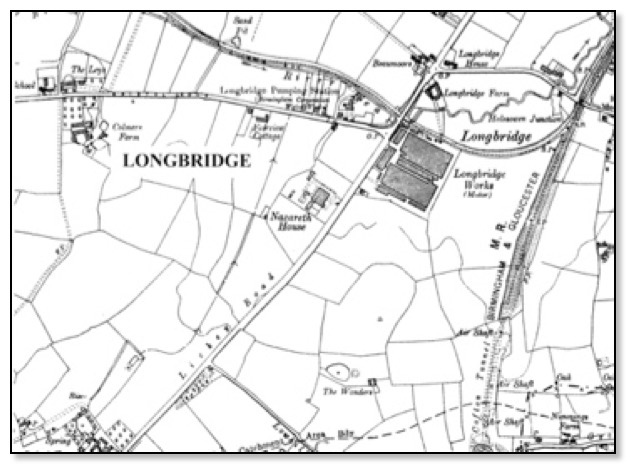
Map 1912
With the start of the First World War and the Austin changing over to producing items for war, it was felt that Longbridge should once again have its own station. So with the building of West and North factories in 1916, and the increase in workers and goods, prompted the Railway Authorities into building platforms inside the works. So by 1917 loop-lines and two signal boxes which were called Longbridge East and Longbridge West had been constructed, along with an island platform. GWR started the first workmen’s service with two trains from Old Hill in the morning, and two trains retuning in the evening on the 18th April 1917.
With the service to the Black Country now open, and as the factory was still crying out for more workers to man the war effort. An advert was placed by the company in the local papers emphasising the convenience of the new services. It appears that slowly more trains were put on to accommodate the increase in workers using the service. At its height in 1918, GWR had three trains in the morning and two trains in the evening.
Access to the platforms was via a walkway under the road bridge, or from the pavement by the island. Officially there wasn't a station at Longbrldge and train times weren't publicised, but members of the public could use the service. Although it was an offence, it was not unknown for Austin workers to walk home along the track, especially if they felt the service had let them down.
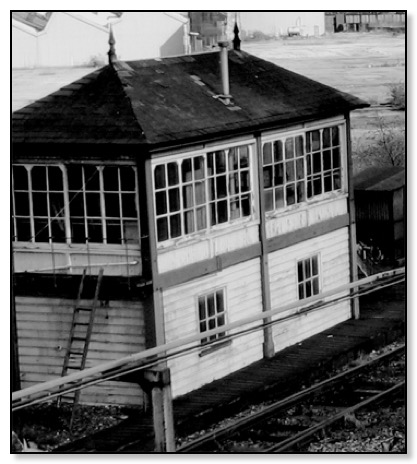
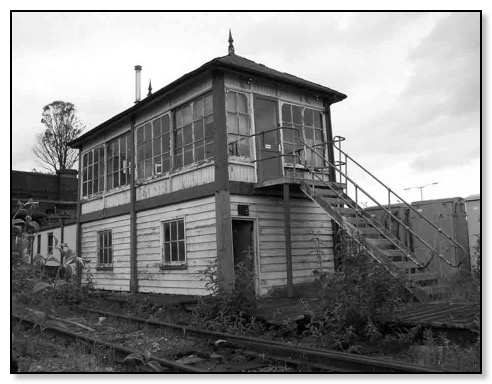
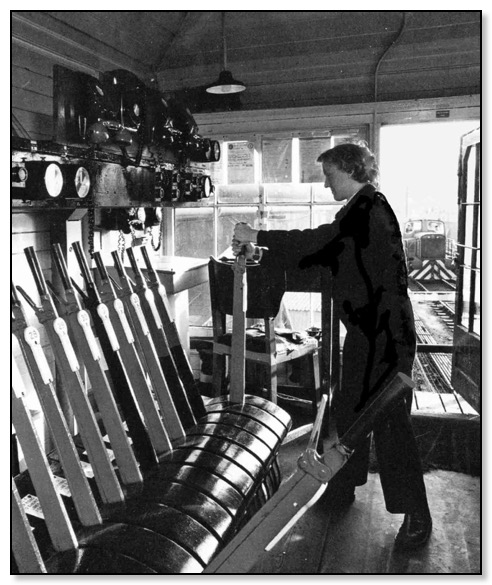
Longbridge East 2006 (Demolished in 2011)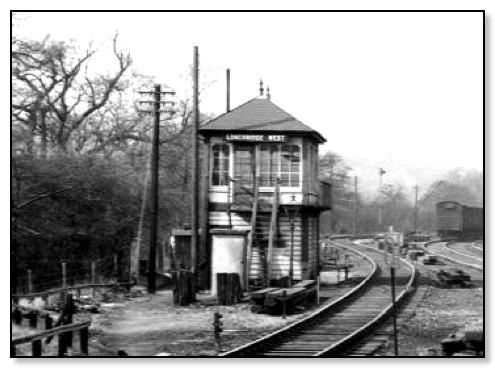
Longbridge West looking from the Station early 1950s . . . . . . . © D J Norton
. . . . . . . . . . . . . . . . . . . . . . . . . . . . . . . . Parcel Office
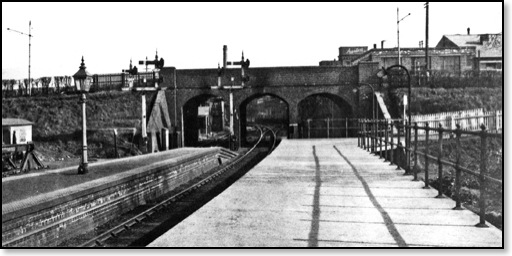
(S Mourton & B Pixton)
1920s Looking from the Station Platform towards the Austin
Here you can see the right hand arch of the road bridge which allowed workers to go straight into South Works by the Medical Block. On the other side was a foot bridge which connected South with North Works.
When the war ended, and government contracts were cancelled, it was necessary to lay workers off and the numbers reduced to about 10,000. Further reductions were made over the years, so that in 1922 when the Austin Seven came out it had shrunk to around 2,600. Such was the success of the Seven, that by 1926 the workforce had risen to 25,000. This meant an increase in passengers using the railways especially from the Black Country, and extra goods trains bringing in materials to Longbridge, as lorry transport was still very limited.
Around the late 1940s because of the increased road traffic the bridge was rebuilt as shown below, but now having only two arches. The building on stilts was a Parcel Office, but any parcels had to be taken via the pavement to the station platform. The shed on the right was where the ticket collector would stand.
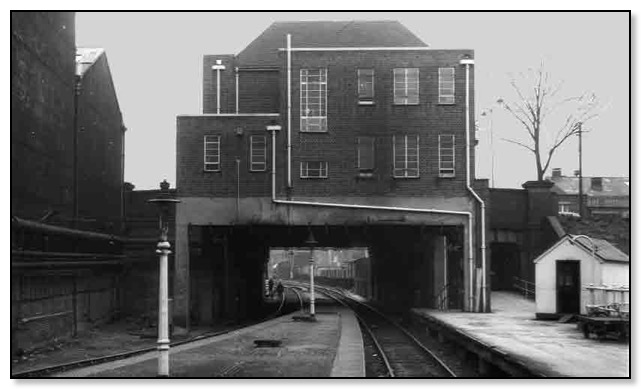
. . . . . . . . . . . . . . . . . . . . . . . . . . . . . . . . Parcel Office . . . . . . . . . . . . . . . .© D J Norton
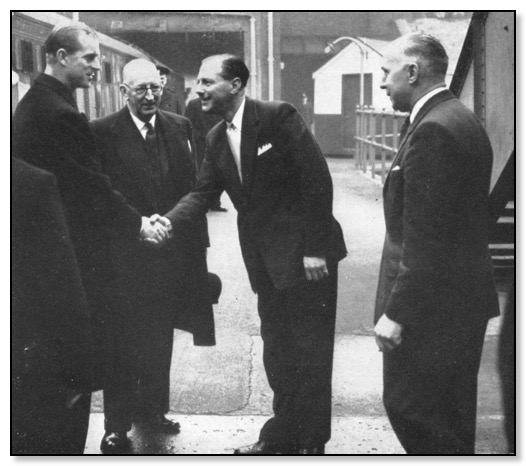
Sir Leonard Lord presenting Mr G W Harriman & Mr J R Edwards to the
Duke of Edinburgh on his arrival at Longbridge Station December 1955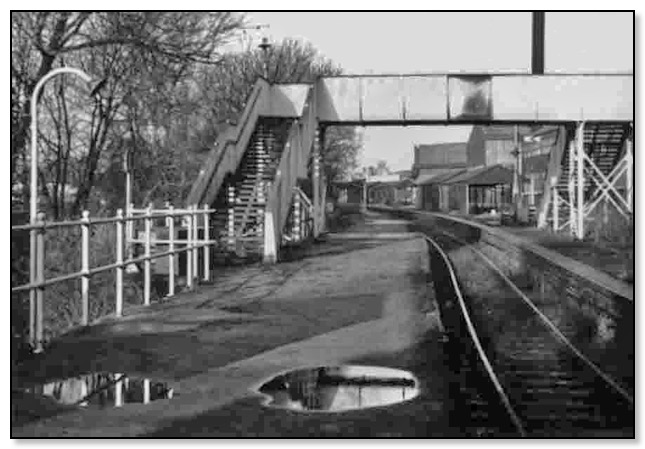
West Works Platforms looking towards Rubery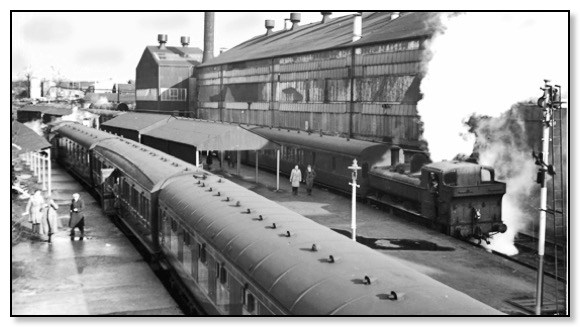

Longbridge Works Station 1956
However, the writing was on the wall for the railway lines around the country, and on the recommendation of Dr R Beeching, many uneconomic goods and passenger services were axed, So on Friday 29th August 1958, the final workmens' train to Halesowen and Old Hill steamed out of Longbridge at 5.40 pm, the engine had the words "The Last" chalked on its side and some detonators were let off to mark its departure. The line itself was still in existence, but when the M5 motorway route was planned in l963, it meant that the section of track between Rubery and Halesowen was closed completely, and on the 4th January 1964 the last train made the journey from Rubery to Halesowen. One section remained open till March that year so that coal could be taken from Longbridge to Rubery Station for the benefit of coal merchants, with just one train a day. In April 1965 the track south of Halesowen was lifted and the Dowery Dell viaduct dismantled. But the track that was by the factory stayed so that the companies engines were able to move goods around.
When the New West Works was built to assemble the Metro bodies, the railway sidings were extended. Each day a train bringing in body-panels from Swindon via Gloucester would arrive at West Works. Below you can see how the railway network changed over years.
____________
Midland Railway
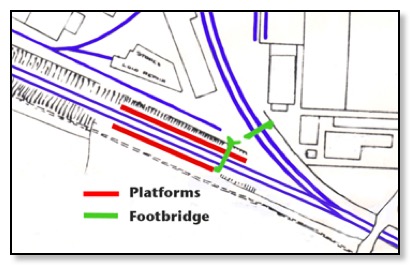
1920s Showing the Station on the main line
The MR decided to construct in 1916 a station with two platforms joined by a footbridge which also extended into the factory site on the main line to Gloucester just south of the Halesowen Junction. This then allowed workers from as far away as Worcester to have a direct service into the works. By 1918 there were five early morning trains and four to take the night shift home operated by the MR from Birmingham New Street and also Worcester.
After the Great War there were around 120 railway companies, so the government under David Lloyd George passed the Railways Act of 1921 often called the Grouping Act. The purpose of the Act was to get the various companies to join up, and retain some of the benefits which the country had derived from a government controlled railway. So MR became part of a new company called London Midland & Scottish (LMS).
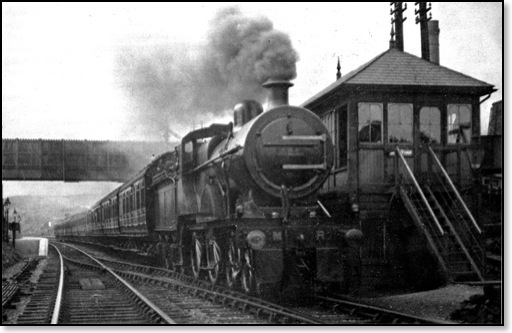
Steaming passed Halesown Junction Signal Box
(Note the footbridge into the works)
Then LMS started to expand and a decision was made to increase the mainline track to four, but the main restriction was with Cofton Tunnel. This tunnel was built between 1838 - 1841 and was 440 yards long with a span of 23 feet and a hight in the centre above the track of 17 feet 2 inches. The main construction been red brick in lime mortar, with the sides of Old English Bond 2 feet thick. Eight shafts were sunk to aid construction with the first six from the North end been nine feet in diameter, with the remaining two only seven feet. Three of the shafts were brick lined and kept open for ventilating purposes, with all the other capped off.
The only way to accommodate two extra tracks, was to demolish the tunnel and make it into a wide cutting. In September 1925 a contract was give to Messrs Logan & Hemingway, Contractors, Doncaster, with work starting in March 1926. The first stage was to remove the material above the tunnel, it has been said that the spoils were deposited on what was then Austin Airfield. Because of problems with slips on the West side, it was decided to construct a heavy concrete retaining wall in sections, with a total length of 310 yards and 5 yards high.
Early 1928 Longbridge Station (main line) was closed, this meant that the nearest station North was Northfield and Barnt Green to the South. Work started by first removing all the soil on the sides and top of the tunnel, this meant that a speed restriction of 15mph was put on passing traffic. But not all train drivers complied with Mr W Jones been reprimanded for not complying.
The cutting would be widen on the left hand side going south as this had a much lower bank, so a railhead was dug into the bank at the same height as the tunnel roof. (As shown in next picture)
Although a lot of work was carried out by the contractor prior to the actual demolition of the tunnel, this work was marred as on Friday 11th May 1928, 60ft of the tunnel roof collapsed resulting in four workmen been killed (two workman of Messrs Logan & Hemingway and the other two employed by LMS) several others were injured, those killed lived locally. At the inquest on 1st June 1928, Mr John Montague stated that having walked through the tunnel 20 minutes before the collapse, he saw no indication of a possible mishap., and in fact a goods train had gone through shortly before the accident. Eli Carvell, general foreman, said that after the accident he found that the inner lining below the springing point was stripped on the West side of the tunnel. The wall there was only 4.1/2” thick, and he believed the stripping at that point was due to defective brickwork underneath. The jury returned a verdict of “Accidental death,” adding that they considered that all concerned did what was requested and proper in the circumstance.
The last train passed through the tunnel at 10.15 pm on Saturday 26th January 1929 and on the Monday morning of the 28th the first trains were coming through the cutting. It was many months after before the four tracks were fully opened.
As you can see from the picture it was a very manual operation.
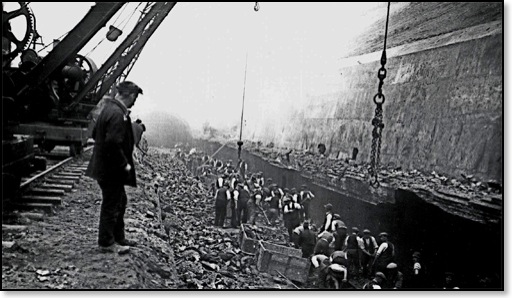
Demolition of the Tunnel in progress
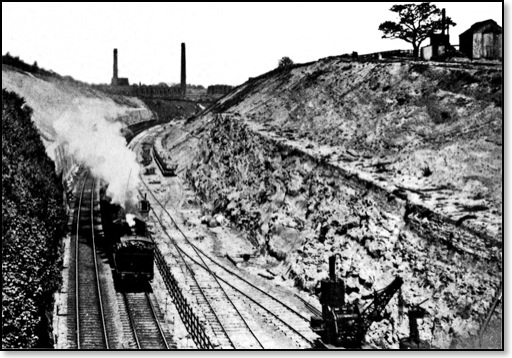
(R S Carpenter collection)
View from Groveley Lane looking towards the Austin
after demolition showing the widening on the right
_______________
The Austin Rolling Stock
In the very early years the company had materials etc delivered to the factory by rail but used horses to pull the wagons around the factory. It wasn't till 1916 that the horses were replaced by locomotives which had come to the end of their working life, some were over forty years old and owned by the companies that had installed the track.
The first recorded engine purchased by the Austin was a 0-6-0ST called PALACIOS supplied by the Hunslet Engine Co. and given the Ref No 464. This second-hand engine was first supplied to a company in Buenos Ayres Argentina around 1888. Over the coming years it still purchased engines which were not in that good a conditions, but as we would say today perhaps the price was right and generally they were been used only for shunting duties.
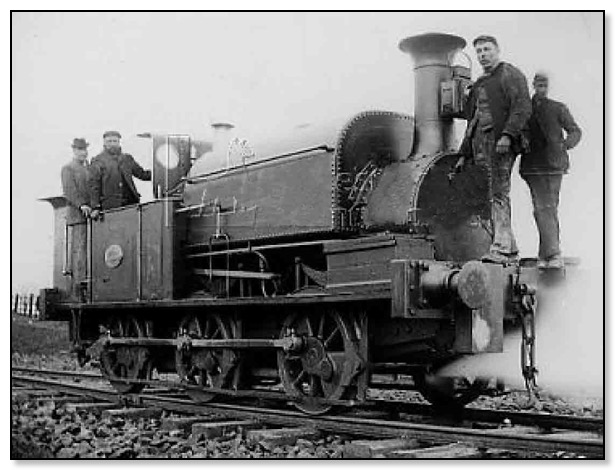
Willie No. 65 (Picture by permission of the Record Office for Leicestershire, Leicester & Rutland & Leicestershire County Council)
Hunslet Engine Co. built 0-6-0 saddletank, WILLIE, No. 65 of 1871. The locomotive is pictured near Braunston Siding at Willoughby in Warwickshire. In 1919 it was moved to its new home at the Austin Motor Company Longbridge. It is not known how long it stayed at the works.
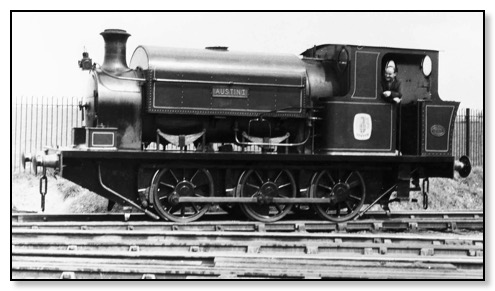
Austin I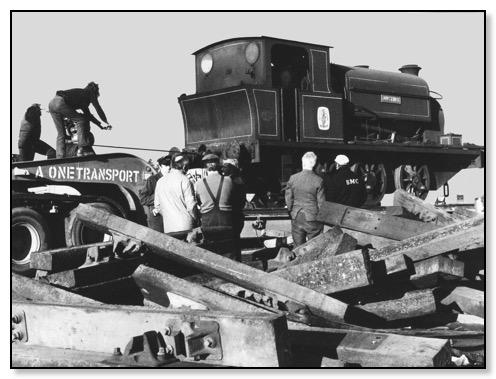
Austin I en route to Llangollen 1973
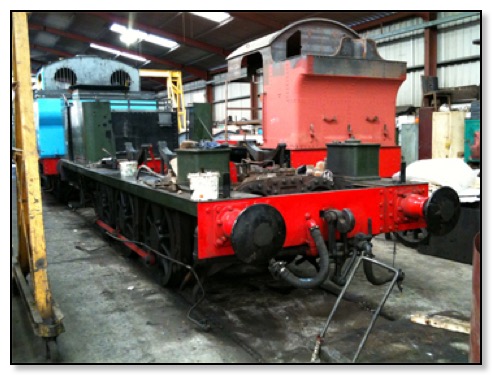
Austin I (Si Price Oct 2009)
Having its 10 year overhaul on the Llangollen Railway.
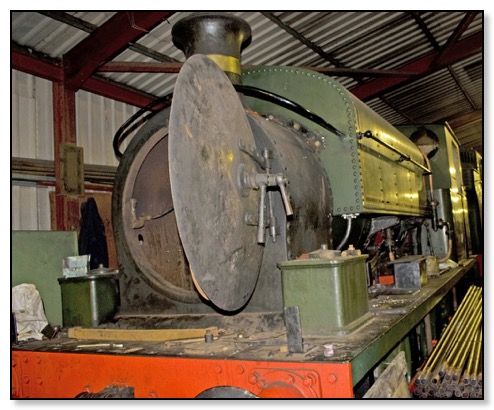
Austin I Nearing Completion (December 2010)
In 1932 the company placed an order with a Leeds firm called Kitson & Co who had taken over the company of Manning Wardle who had gone into liquidation in 1927. So Austins first engine was a Manning Wardle design 0-6-0ST which was delivered in March 1932 and was given the name ‘AUSTIN I’. It continued in service till November 1973 when it was purchased by the Llangollen Railway. It is still there now but having a re-fit.
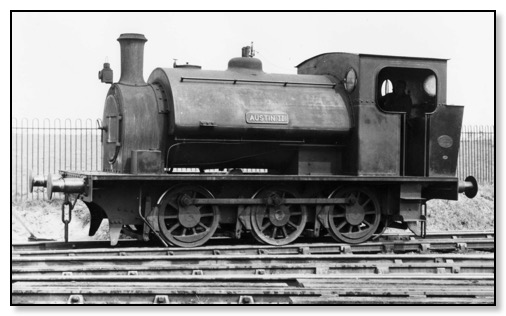
Austin II
It appears that the company did have a look at buying in 1933 a Armstrong Whitworth 0-4-0 diesel-electric locomotive. A loco was supplied for a short time, but in the end it was returned. So having looked at the diesel-electric option, decided to purchase from the Hunslet Engine Company in Leeds a 0-6-0ST. This locomotive was delivered to Longbridge in 1936 and was given the name 'Austin II'. It remained in service with the company, and no doubt was maintained to a high standard, but was finally scrapped at the end of 1970.
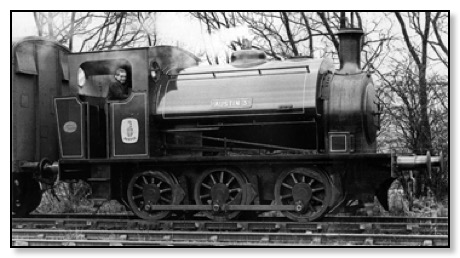
Austin 3 (Don Townsley)
The next loco to join the fleet was in September 1937 an identical loco to 'Austin II' a Hunslet Engine Company 0-6-0ST. It is interesting that instead of calling it Austin III it was actually called Austin 3. This also gave good service, but was scrapped in March 1971.
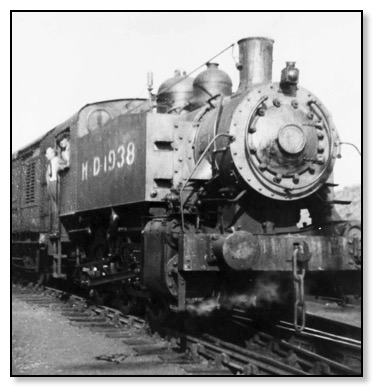
WD 1938 and was called "Ada II"
This was an America engine that came over under the Lend-Lease scheme and worked at Longbridge in WWII. These engines were ordered by the USATC (United States Army Transportation Corps) and were built by three manufacture, to a design by Colonel Howard G Hill. They were designated as Class "S100" by the USATC and at the time the most powerful 0-6-0 tank engines ever made. In the early 60s it was scraped.
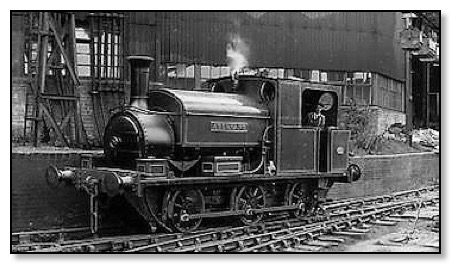
Abernant at South Works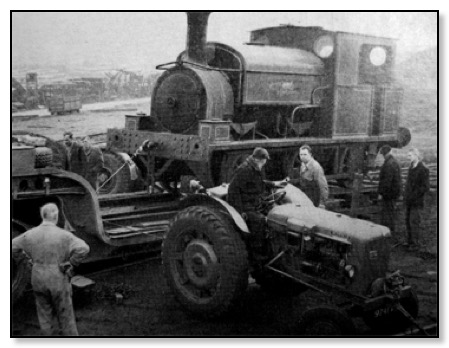
Abernant leaving Longbridge in 1956
In the 1950s with the company owning its own engines, except for an ex-contractor's which was called 'ABERNANT'. But in September 1957 two W G Bagnall 0-6-0STs which had been used by the Steel Company of Wales, and had been numbered 401 and 403 arrived at Longbridge. These were then renamed 'Vulcan' & 'Victor' and were probable the locos that most people remember.
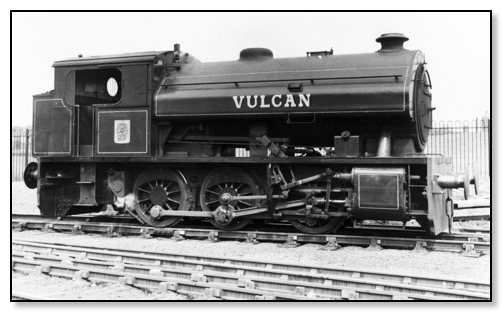
Austin 'Vulcan'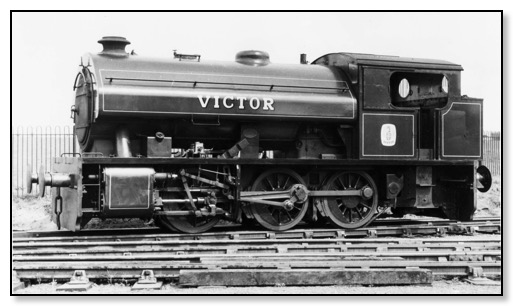
Austin 'Victor'
A part of the large Longbridge site which was not connected to the rest of the railway network, was the Shadow Factory built in 1936-7 and was given the name Cofton Hackett Factory but was called 'The AERO' by the locals.
It was built adjacent to the main line from Birmingham to Worcester, a spur was built from the main line to the internal track. A new locomotive was purchased, a John Fowler 0-4-0 diesel and was given the name Austin IV, back to the Roman numerals.
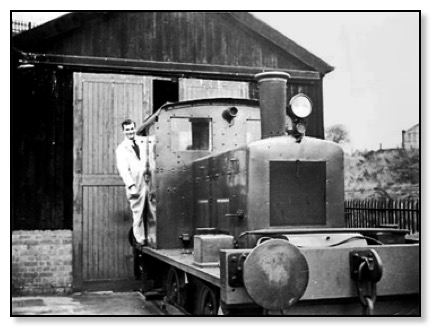
Fowler Austin IV outside East Engine Shed 1960
(Ron Boswell)
Its main duties were to shunt the various wagons that were brought in from the main line. One of the main materials brought in was coal for the Boiler House. In the mid 1960s a new factory was built at the end of East Works for producing the 'E' series engines, so the Boiler House was extended, but still powered by coal. If the engine needed to have any maintenance work carried out, permission would need to be obtained for the loco to run down to the South Works via the main line.
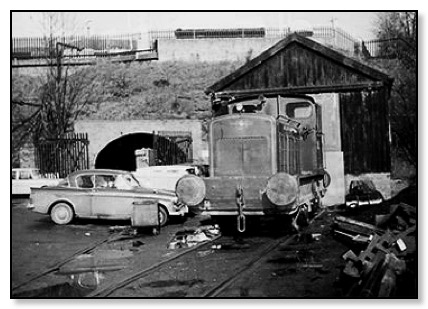
Rushton & Hornsby 88DS 4wDM
(Ron Boswell)
As the need for a rail head declined, the Fowler was finally scrapped in 1974, but soon after replaced by a Rushton & Hornsby Diesel Loco from Morris Motors Cowley. It carried out its duties till July 1978 when it was sent to W.F&J.R Shepherd Ltd Ltd Newcastle upon Tyne, and scraped in August 1993.
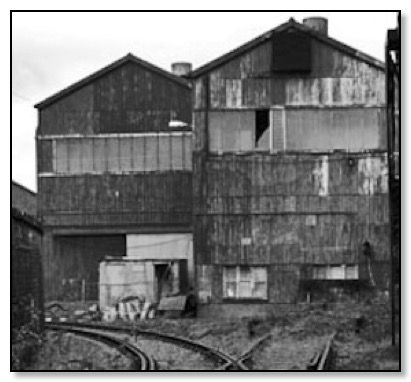
The Track on the right went into the
Maintenance Repair Shed
With the various locomotives working in different locations around the site, each part of the works had its own Engine Shed where the day to day maintenance was carried out. When an locomotive needed a major overall it would then go into an engine shed that was part of the Main Engineering Stores in South Works.
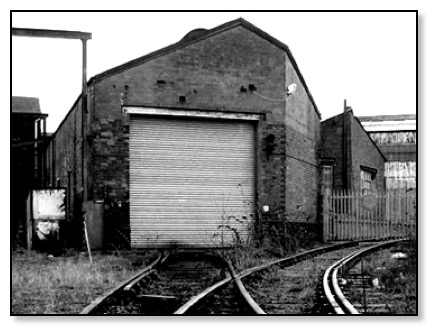
South Engine Shed 2006
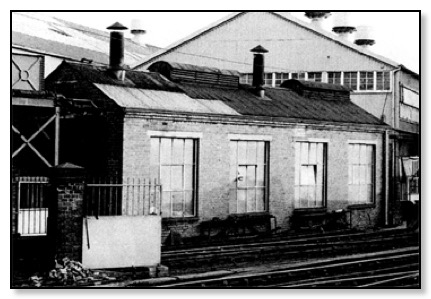
North Engine Shed 1970s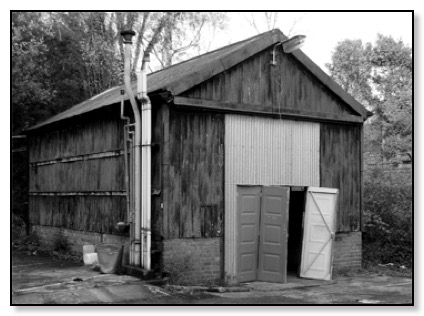
East Works Engine Shed 2006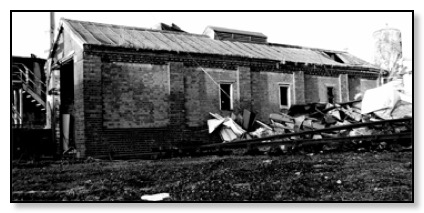
West Works Engine Shed 2006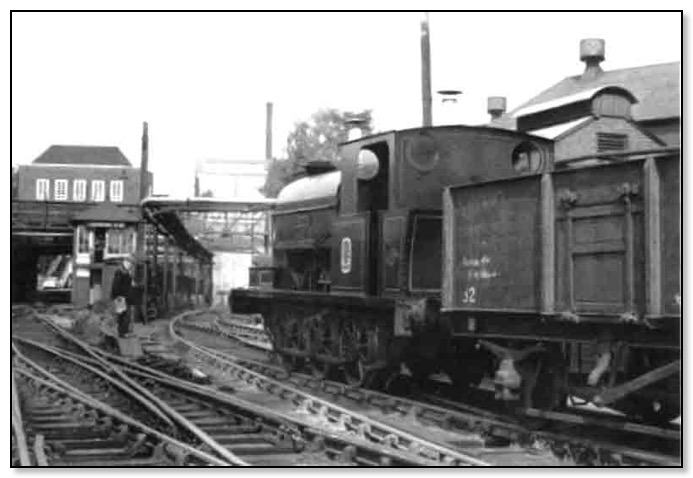
Looking Towards the Parcel Office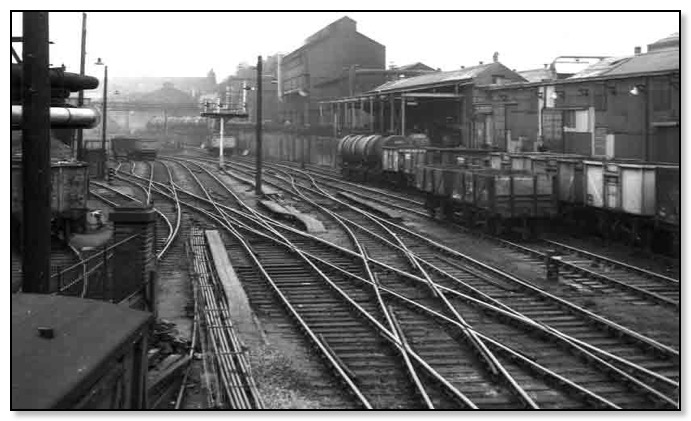
. . . . . . . . . . . . . . . . . . . . . . . . Looking East from the Bristol Road . . . . . . . . . . © D J Norton
Ex Longbridge Diesels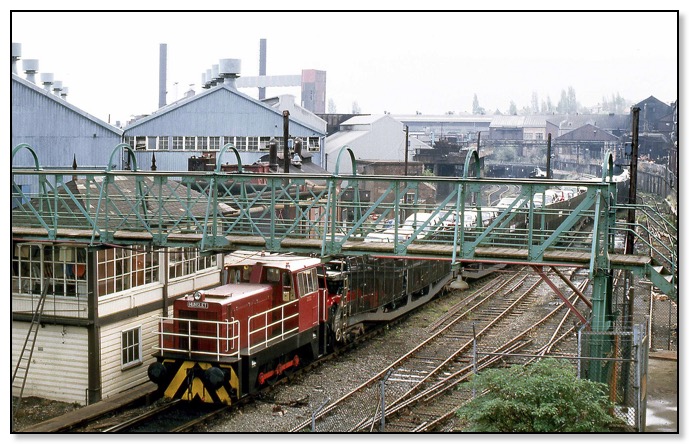
Hunslet 0-6-0 Diesel Hydraulic
Called Laura, about to go under the A38.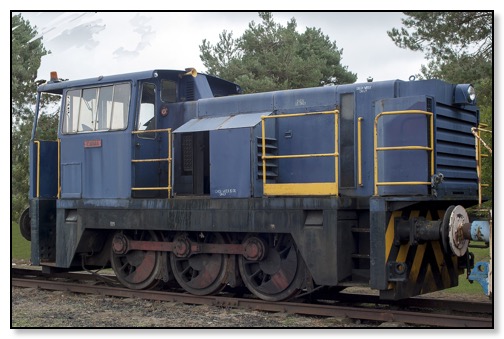
Hunslet 0-6-0 Diesel Hydraulic
Called Emma.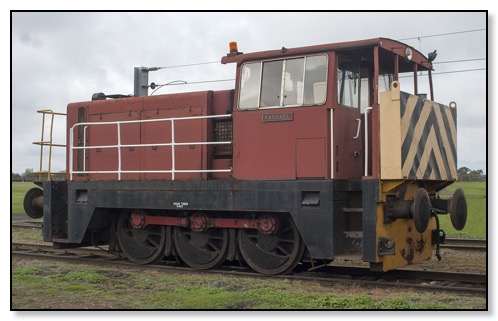
Hunslet 0-6-0 Diesel Hydraulic
Called Rachel
Three Locos were removed from the Longbridge site when the company collapsed in 2005. Emma and Rachel were sent to the former Royal Engineers depot at Long Marston, which is also the base for the Stratford on Avon and Broadway Railway Society. They bought ex-BR hopper wagons that Austin Rover had bought in the 1980s to ferry coal for the boilers.
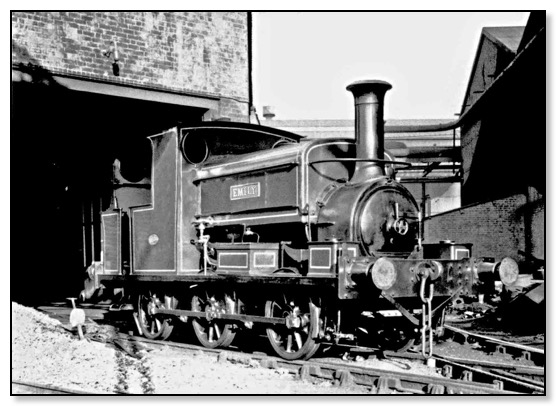
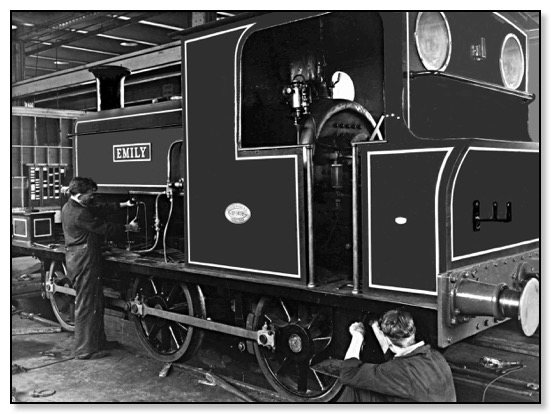
Emily receiving an overhaul 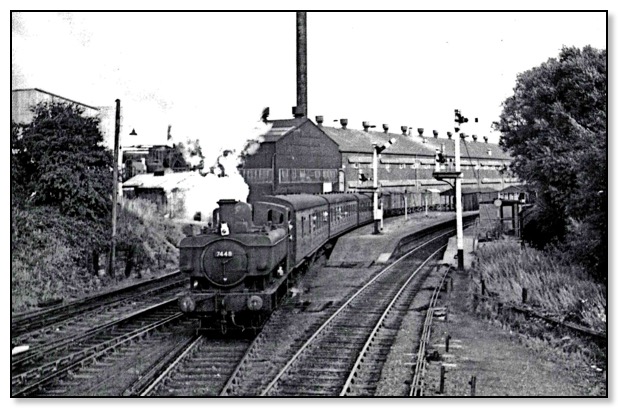
Engine 7448 leaving Longbridge Station, on its way to Old Hill.
7448 was built by British Rail at Swindon works in 1950.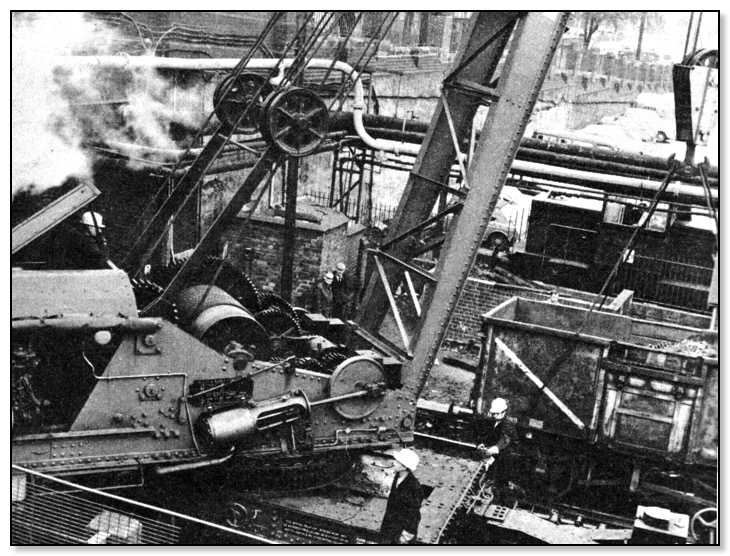
Longbridge De-Railment by the footbridge
British Rail's emergency squad was soon on the scene following a lunch time de-railment on the line linking Longbridge South and West works. The problem facing them was the removal of a de-railed truck weighing 11 tons and loaded with 2.5 tons of scrap metal. And then there was the restoration of 300ft. of damaged line. The repair gang from BR's Saltley depot brought with them a 45-ton capacity steam crane, one of only five in the country, and by late afternoon the truck was back on the rails and track repairs were well under way. The de-railment trapped a BR diesel engine in Longbridge's West siding for the afternoon, and led to the temporary suspension of shunting between the two works and the loading of finished cars onto car-flats for rail despatch.
For more pictures on this line, click on this link.

